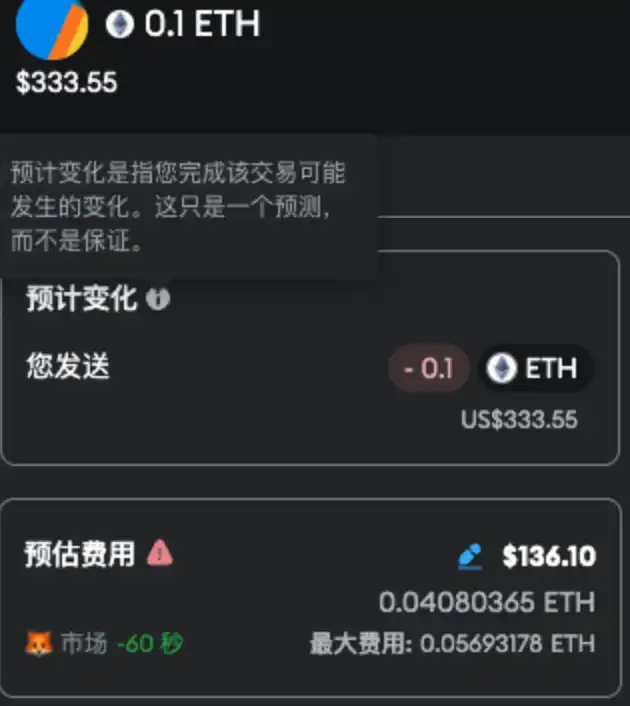
Liên quan đến coin
Tính toán giá
Lịch sử giá
Dự đoán giá
Phân tích kỹ thuật
Hướng dẫn mua coin
Danh mục tiền điện tử
Máy tính lợi nhuận

Giá GasGAS
Bạn cảm thấy thế nào về Gas hôm nay?
Giá Gas hôm nay
Giá cao nhất của GAS là bao nhiêu?
Giá thấp nhất của GAS là bao nhiêu?
Dự đoán giá Gas
Khi nào là thời điểm thích hợp để mua GAS? Tôi hiện nên mua hay bán GAS?
Giá của GAS vào năm 2026 sẽ là bao nhiêu?
Giá của GAS vào năm 2031 sẽ là bao nhiêu?
Lịch sử giá Gas (VND)
 Giá thấp nhất
Giá thấp nhất Giá cao nhất
Giá cao nhất 
Thông tin thị trường Gas
Lịch sử vốn hóa thị trường của Gas
Thị trường Gas
Gas nắm giữ theo mức độ tập trung
Địa chỉ Gas theo thời gian nắm giữ

Xếp hạng Gas
Về Gas (GAS)
GAS là gì?
GAS, thường được gọi là NEOGas, là một thành phần không thể thiếu của blockchain NEO, một nền tảng thường được mệnh danh là Ethereum của Trung Quốc. Mạng NEO độc đáo ở chỗ áp dụng cơ chế token kép nhằm tách biệt quyền quản trị và quyền sử dụng mạng. Trong khi NEO đại diện cho khía cạnh quản trị thì GAS là token vận hành, tạo điều kiện thuận lợi cho các hoạt động khác nhau trên mạng NEO. Giống như khái niệm “gas” trên nền tảng Ethereum, GAS trong hệ sinh thái NEO được sử dụng để thanh toán cho vô số hoạt động, khiến nó trở nên cần thiết để mạng lưới hoạt động mượt mà.
Tầm nhìn của mạng NEO về một "nền kinh tế thông minh" được củng cố bởi hệ thống token kép. Với tổng nguồn cung là 100 triệu token, token NEO cho phép chủ sở hữu tham gia quản trị, bỏ phiếu cho Ủy ban Neo, cơ quan giám sát hoạt động của blockchain. Mặt khác, GAS, được tạo ra sau khi mỗi khối được xử lý, được sử dụng để thanh toán phí giao dịch và triển khai hợp đồng thông minh trên mạng NEO. Hệ thống kép này đảm bảo việc quản trị là phi tập trung trong khi mạng vẫn linh hoạt và hiệu quả.
Nguồn thông tin về GAS
Tài liệu chính thức: https://docs.neo.org/docs/en-us/index.html
Website chính thức: https://n eo.org/
GAS hoạt động như thế nào?
Mạng NEO tính phí GAS cho việc vận hành và lưu trữ token và hợp đồng thông minh. Cơ chế này ngăn ngừa nguy cơ lạm dụng tài nguyên nút. Phí hệ thống thu được sẽ được đốt, đảm bảo đặc tính giảm phát cho GAS. Trong khi đó, phí mạng được phân phối lại cho các nút đồng thuận, cung cấp động lực kinh tế để duy trì tính toàn vẹn và hiệu quả của mạng.
GAS được tạo ra với tốc độ do mạng xác định. Ví dụ: 5 token GAS được tạo ra cho mỗi khối và được phân phối theo nhiều tỷ lệ khác nhau. Phần GAS lớn nhất được trao cho người bỏ phiếu (voter) dưới dạng phần thưởng cho vai trò tích cực của họ trong quản trị mạng. Hệ thống này không chỉ khuyến khích sự tham gia mà còn đảm bảo rằng những người đóng góp vào việc ra quyết định của mạng lưới sẽ được thưởng xứng đáng.
GAS token là gì?
GAS là một trong hai token được Neo Foundation tạo ra, với chức năng chính là token tiện ích cho mạng NEO. GAS được sử dụng để thanh toán phí giao dịch và triển khai hợp đồng thông minh. Không giống như NEO, không thể chia tách, GAS có thể chia nhỏ, khiến nó phù hợp với các giao dịch vi mô trên mạng.
Bằng cách nắm giữ NEO trong các ví cụ thể, người dùng có thể kiếm GAS dưới dạng cổ tức. Cơ chế staking này cung cấp cho chủ sở hữu NEO thêm một cách để kiếm lợi nhuận, khiến hệ sinh thái NEO trở nên hấp dẫn với việc tham gia quản trị và tạo thu nhập thụ động.
Yếu tố ảnh hưởng giá của GAS?
Trong bối cảnh Web3 liên tục phát triển, giá của GAS, một token quan trọng trong mạng NEO, bị ảnh hưởng bởi vô số yếu tố bắt nguồn từ động lực của blockchain và điều kiện thị trường bên ngoài. Về cốt lõi, như với tất cả các tài sản, nguyên tắc cung và cầu đóng vai trò then chốt trong việc xác định giá của GAS. Khi tiền điện tử ngày càng được chấp nhận và mạng NEO đạt được sức hút, nhu cầu về GAS có thể có những biến động đáng kể. Biểu đồ tiền điện tử và phân tích tiền điện tử cung cấp thông tin chuyên sâu về những biến động này, thường nêu bật tác động của tin tức mới nhất, từ những thay đổi về quy định tiền điện tử đến diễn biến mới nhất trong không gian blockchain.
Sự biến động của thị trường, một đặc điểm nổi bật của lĩnh vực tiền điện tử, càng khiến việc dự đoán giá tiền điện tử trở nên phức tạp. Các yếu tố như rủi ro tiền điện tử, lo ngại về bảo mật và xu hướng tiền điện tử rộng hơn có thể khiến giá biến động đột ngột và kịch tính. Ví dụ: nếu các token như GAS được cho là khoản đầu tư tiền điện tử tốt nhất cho năm 2023 trở đi thì nhu cầu có thể tăng đột biến, ảnh hưởng đến giá của token này. Về bản chất, trong khi cơ chế nội tại của mạng NEO và các nguyên tắc blockchain định hướng cho giá trị nền tảng của GAS thì các yếu tố bên ngoài, từ quy định về tiền điện tử đến tin tức mới nhất trong miền Web3, đều định hình giá thị trường của nó.
GAS sang tiền nội địa
- 1
- 2
- 3
- 4
- 5
Hướng dẫn mua Gas(GAS)

Tạo tài khoản Bitget miễn phí

Xác minh tài khoản của bạn

Chuyển đổi Gas sang GAS
Giao dịch futures vĩnh cửu GAS
Sau khi đã đăng ký thành công trên Bitget và mua USDT hoặc token GAS, bạn có thể bắt đầu giao dịch phái sinh, bao gồm giao dịch futures và ký quỹ GAS để tăng thu nhập của bạn.
Giá GAS hiện tại là ₫51,536.54, biến động giá trong vòng 24 giờ là +1.88%. Nhà giao dịch có thể kiếm lợi nhuận bằng cách mở long hoặc short GAS futures.
Tham gia giao dịch sao chép GAS bằng cách theo dõi elite trader.
Tin tức về Gas





Niêm yết mới trên Bitget
Mua thêm
Câu Hỏi Thường Gặp
Giá hiện tại của Gas là bao nhiêu?
Khối lượng giao dịch 24 giờ của Gas là bao nhiêu?
Giá cao nhất mọi thời đại của Gas là bao nhiêu?
Liệu tôi có thể mua Gas trên Bitget?
Tôi có thể nhận được thu nhập ổn định khi đầu tư vào Gas không?
Tôi có thể mua Gas ở đâu với mức phí thấp nhất?
Tôi có thể mua Gas (GAS) ở đâu?
Mục video — xác minh nhanh, giao dịch nhanh

Bitget Insights





Tài sản liên quan



































Dữ liệu mạng xã hội Gas
Trong 24 giờ qua, điểm tâm lý mạng xã hội của Gas là 3 và tâm lý mạng xã hội đối với xu hướng giá Gas là Tăng giá. Điểm mạng xã hội tổng thể của Gas là 0, xếp hạng 753 trong số tất cả các loại tiền điện tử.
Theo LunarCrush, trong 24 giờ qua, tiền điện tử được đề cập trên các mạng xã hội tổng cộng 1,058,120 lần, trong đó Gas được đề cập với tỷ lệ tần suất là 0.01%, xếp hạng 366 trong số tất cả các loại tiền điện tử.
Trong 24 giờ qua, có tổng cộng 656 người dùng duy nhất thảo luận về Gas, với tổng số lượt đề cập đến Gas là 67. Tuy nhiên, so với 24 giờ trước đó, số lượng người dùng duy nhất đã tăng 53% và tổng số lượt đề cập đã giảm 18%.
Trên X, có tổng cộng 1 bài đăng đề cập đến Gas trong 24 giờ qua. Trong số đó, 0% cho rằng Gas sẽ tăng giá, 100% cho rằng Gas sẽ giảm giá và 0% tỏ ra trung lập đối với Gas.
Trên Reddit, đã có 2 bài đăng đề cập đến Gas trong 24 giờ qua. So với 24 giờ trước đó, số lượt đề cập đã giảm 0%.
Tất cả tổng quan xã hội
3